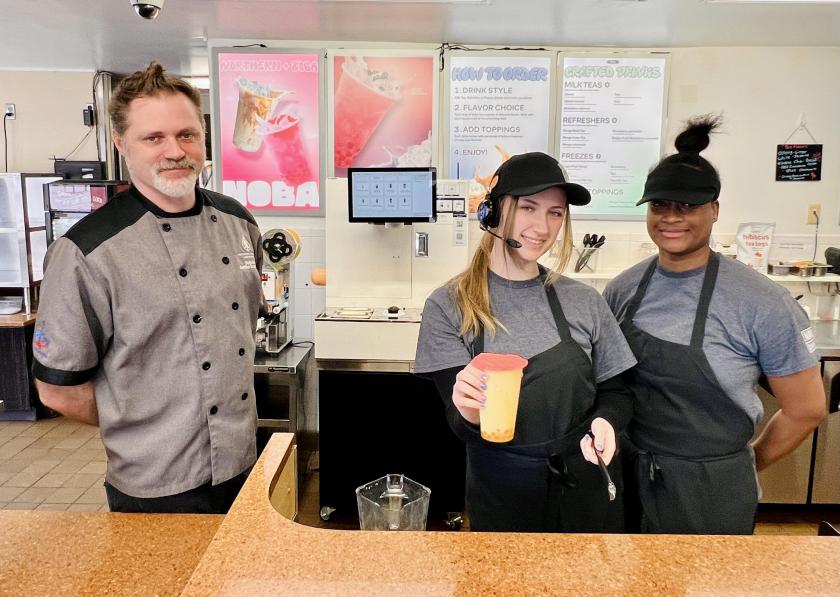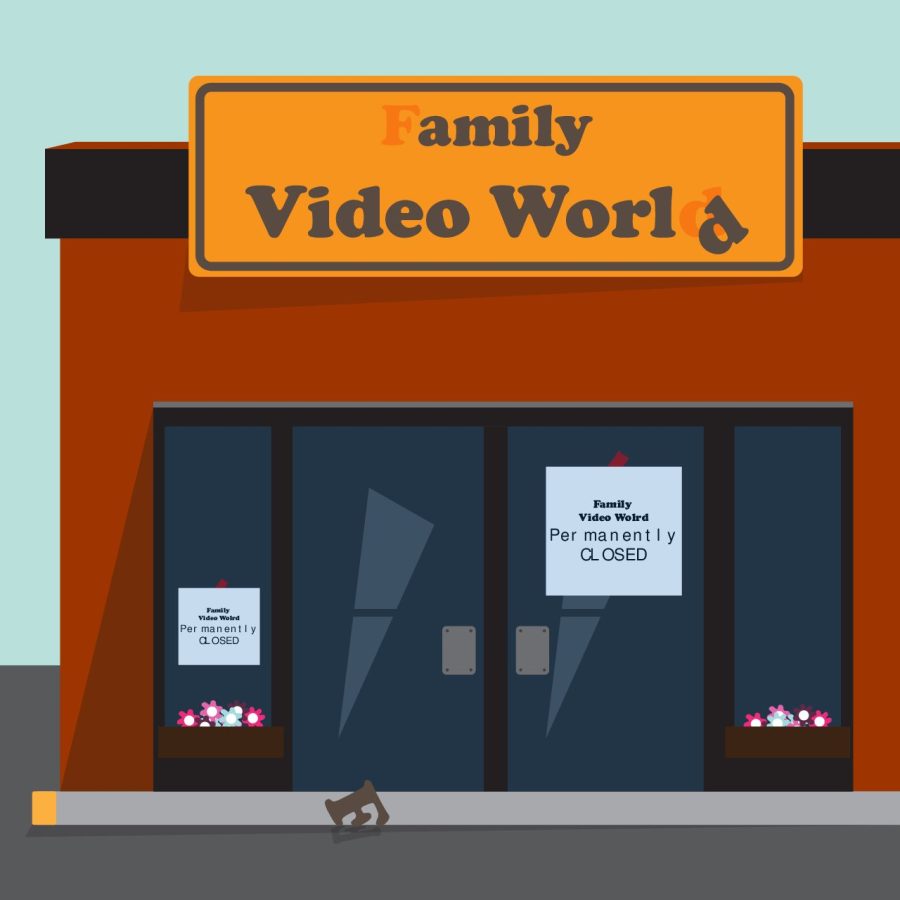Opinion — Streaming services have killed movie magic
January 25, 2023
One of the most incredible things about growing up in Gladstone was the Front Row Video store on Delta Avenue.
I still remember the excitement I felt when my dad would ask me if I wanted to rent a few movies. Upon swinging open the bell-clad front door, I was always taken aback by what appeared to be rows and rows of films. Stepping into the building felt as if you were being transported to a different place and time, with the walls adorned with colorful movie posters from decades prior.
I vividly recall running my hands along the Velcro trim that ran beneath the store’s film collection and plucking off the corresponding chips of my eventual picks. Front Row Video was always organized by genre, and as I grew older my taste in film shifted dramatically. In my early teens, my friends and I would beeline to the horror/thriller section, eager to select our next slumber party scare.
When Front Row Video ultimately announced it would be closing its doors, a tiny piece of my heart broke.
The closure of the Gladstone location came at a strange time for media consumers. Streaming platforms like Netflix and Hulu were just kicking off, and my family was unsure whether we wanted to invest in such services. We often depended on Charter On Demand to watch new releases, most of which came at a heftier price.
While the rise in streaming services did not kill the video store, it certainly played the most significant role in driving the industry out of business. Another reason for Front Row Video’s demise is the lack of return on the store’s investments.
After a new release hits the market, it is only in demand for a limited period of time. These video stores would purchase copies in bulk to keep up with the original demand, only to be left behind when the craze settled. These films would ultimately end up in the discounted section of the store less than a year after their original release.
When Front Row Video was selling off the remainder of its stock many years ago, my dad and I visited the store to pick up our favorite movies at a cheap price. While in hindsight this was foolish, considering streaming platforms now hold hundreds of titles to choose from, part of us was always attached to the sentimental feeling that accompanied having a physical copy.
From reading the film’s credits to flipping through its accompanying booklet, I always loved absorbing as much information as I could about the movie I was about to watch. Even better, I loved looking at the art on the DVD — and would be disappointed if it did not live up to my expectations.
The movie collection in our family household is extensive, with two cabinets containing DVDs and VHSes collecting dust in our basement.
Video stores are not the only businesses being threatened by the new dominance of streaming services. Most of the advertisements being played at the theater use phrases like “a communal experience” and “fresh popped popcorn” to draw potential consumers in. Even further, several discounts are being offered throughout the week to make a trip to the theater more alluring and affordable.
A-list actors are even jumping on the promotional bandwagon for going to the theater. Before both “Top Gun: Maverick” and “Babylon,” the main actors in the films appeared on screen to thank audience members for viewing the film in the theaters — stating that it was “meant to be seen” on the big screen.
Nicole Kidman’s AMC Theatres commercial, which discussed the “magical” theater environment, gained national attention as it attempted to increase theater attendance as well.
As someone who frequents the movie theater, more often than I would like to admit, it pains me to say that people are not getting out like they used to. I cannot tell you how many films I watched in an empty theater on opening night in the past year, many of which are now critically acclaimed.
Nowadays, the only films that regularly draw people to the theater are Marvel movies, which is an entirely different issue that I will address at a later date.
The success of streaming services should come as a surprise to no one. Not only are they incredibly accessible, eliminating the need to travel and pay a fee if visiting the theater or movie store, but they are tailored toward users’ interests.
Netflix’s recommendation system uses algorithms to select titles similar to films and TV shows that have been watched by an individual user. This eliminates the risk of selecting a film at the theater or movie store that you may not like.
You can now view endless amounts of popular media in the comfort of your own home for a small monthly fee, which is a phenomenal deal when compared to movie theater and video store prices. You have the power to rewind or pause if you miss a scene, and even stop watching a movie altogether without losing any money.
I will be honest in admitting that I love my streaming services, so much so that I do not even use cable television anymore. It is unfortunate that both streaming and physical forms of media consumption, whether it be video stores or movie theaters, can seemingly no longer co-exist. Kidman was right in stating that the magic of the movies is lost when you have at-home access to extensive catalogs.
Editor’s Note: The North Wind is committed to offering a free and open public forum of ideas, publishing a wide range of viewpoints to accurately represent the NMU student body. This is a staff column, written by an employee of the North Wind. As such, it expresses the personal opinions of the individual writer, and does not necessarily reflect the position of the North Wind Editorial Board.




























